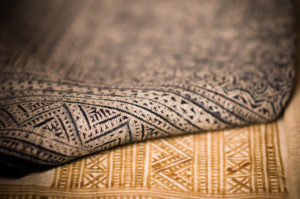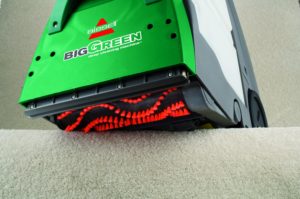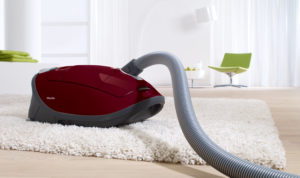
Berber carpeting is growing in popularity throughout the United States, and for good reason: it’s versatile, durable, and compatible with a range of décor. While it used to be relegated to home offices and finished basements, its role has expanded over the last several years and it can now be found throughout the home. Today we’re going to answer some of the most frequently asked questions about berber carpeting, including pros, cons, how it stands up to pets and children, and how to care for it and effectively vacuum it.
What exactly is berber carpet, where did it come from, how is it made, and why is it popular?

Historically, berber carpets were light-colored carpets with darker-colored elements enmeshed within them (most often browns and grays). The Berber tribes in North Africa traditionally weaved in such fashion. Because the color flecks were typically found in looped carpeting, looped carpets began to be called Berber carpets. With time, more colors became available, including solid ones. Today, despite the absence of traditional berber colors, looped style carpets are most frequently called berbers.
Perhaps the primary reason for berber’s success has to do with its cost-effectiveness. Simply put, most berber carpets are cheaper than other home and residential carpet styles. That said, you can find plenty of expensive and mid-priced berber carpeting.
However, it’s generally true that you’ll get more for your money per square foot with berber than you will with many cut-pile styles in addition to greater durability. This has to do with berber being cheaper to manufacture and typically made from olefin, which is cheaper than wool, nylon, or similar fibers. While all carpets start out with loops, berber carpets, unlike cut piles like frieze and Saxony carpets, don’t require shearing off loops, which naturally makes them cheaper.
How durable is berber carpeting? Are there any other pros to it?
Berber is traditionally seen as more durable than most other residential carpet styles. This makes sense when you consider how looped fibers are going to be stronger looped than when cut. However, as with most things in life, you get what you pay for to some extent, and poor quality berbers won’t be as durable as mid-quality anything (Saxony, frieze, etc). A fair and accurate comparison needs to be done across carpets of equal quality.
Additional berber pros besides cost and durability include easy levels of cleaning and care, relatively speaking. While you’ll still have to pay attention to what you’re cleaning (e.g., wine stains, orange juice stains, or coffee stains)and how quickly you attack it, because spills often sit on the carpet loops instead of work themselves into the fibers, you’ll often have more time to work and a larger window of flexibility when cleaning berber carpets.
On top of this, since berber carpets tend to either come in multiple colors or in color flecks, they’re going to do a better job at hiding stains and soiling than brighter toned carpets.
What are the cons and disadvantages of berber carpets?
As you can imagine, if berber’s prime advantages are being cheap, durable, and easy to clean, it’s going to have some cons too, or else everyone would use it. One con involves snags and runs. As a loop carpet, you can catch things in the loops and pull them out. This won’t happen just by walking across the carpet or driving toy cars over it, but it could happen by snagging furniture (e.g., sofas, chairs, beds) while dragging it from one part of a room to another.
Another con to keep in mind is softness; because it’s a low-pile and looped carpet, it’s simply not going to be as gentle underfoot (or with your hands, face, or other body parts, for the more adventurous) as a medium-pile or high-pile carpet. This is particularly likely to be the case with an olefin fiber berber. If you want something soft, you’ll want to look at a soft-fiber carpet (e.g., a Mohawk SmartStrand-type carpet).
How do berber carpets stand up to pets and kids, and which carpet cleaners work well with them?

Carpets that do well with pets tend to do well with kids and vice-versa, and berber is no exception. The carpet isn’t going to hurt your kids or pets (no, not even your cat’s claws), and your children aren’t going to hurt the carpet without planning to. However, cats that enjoy scratching (and most cats do) might take to your berber if they like the texture, and if they scratch long enough, they can definitely damage the fibers. You might want to consider a scratching post if you don’t already have one. Dogs aren’t likely to do damage besides dirtying the carpet, which is where a good carpet cleaner like the Bissell 86T3 Big Green comes in for general carpet care and maintenance.
Is there a recommended or best vacuum or carpet cleaner for berber?

As noted above, a good carpet cleaner will be able to take care of most issues that can arise with a berber carpet. In terms of vacuums, we’d caution you to use vacuums without power heads and beater bars, as these heads are strong enough to grab any loose strands or snags and unravel them. If you use a Miele, this means avoiding electrobrushes or simply turning off the powered head option. Our favorite vacuum for berber carpets is the Miele Complete C3 Soft Carpet. However, you don’t need this particular Miele over any other for berbers; any Miele with a turbo brush or electric brush head will work, keeping in mind that you’ll want to turn off the electric option as noted earlier.
![]() You can buy the Bissell 85T3 Big Green carpet cleaner here on Amazon. You can buy the Miele Complete C3 Soft Carpet here. You can buy a beautiful Southwest Native American berber area rug here.
You can buy the Bissell 85T3 Big Green carpet cleaner here on Amazon. You can buy the Miele Complete C3 Soft Carpet here. You can buy a beautiful Southwest Native American berber area rug here.
![]() Canadians can buy the Miele Soft Carpet here and the Bissell Big Green here.
Canadians can buy the Miele Soft Carpet here and the Bissell Big Green here.
 If you find our research on PMC helpful, you can follow our efforts to keep maniacally reviewing home cleaning tools by shopping through our links above. We promise to keep fighting the good fight against every horror children, animals, and grown, yet messy humans can inflict upon a clean home.
If you find our research on PMC helpful, you can follow our efforts to keep maniacally reviewing home cleaning tools by shopping through our links above. We promise to keep fighting the good fight against every horror children, animals, and grown, yet messy humans can inflict upon a clean home.

